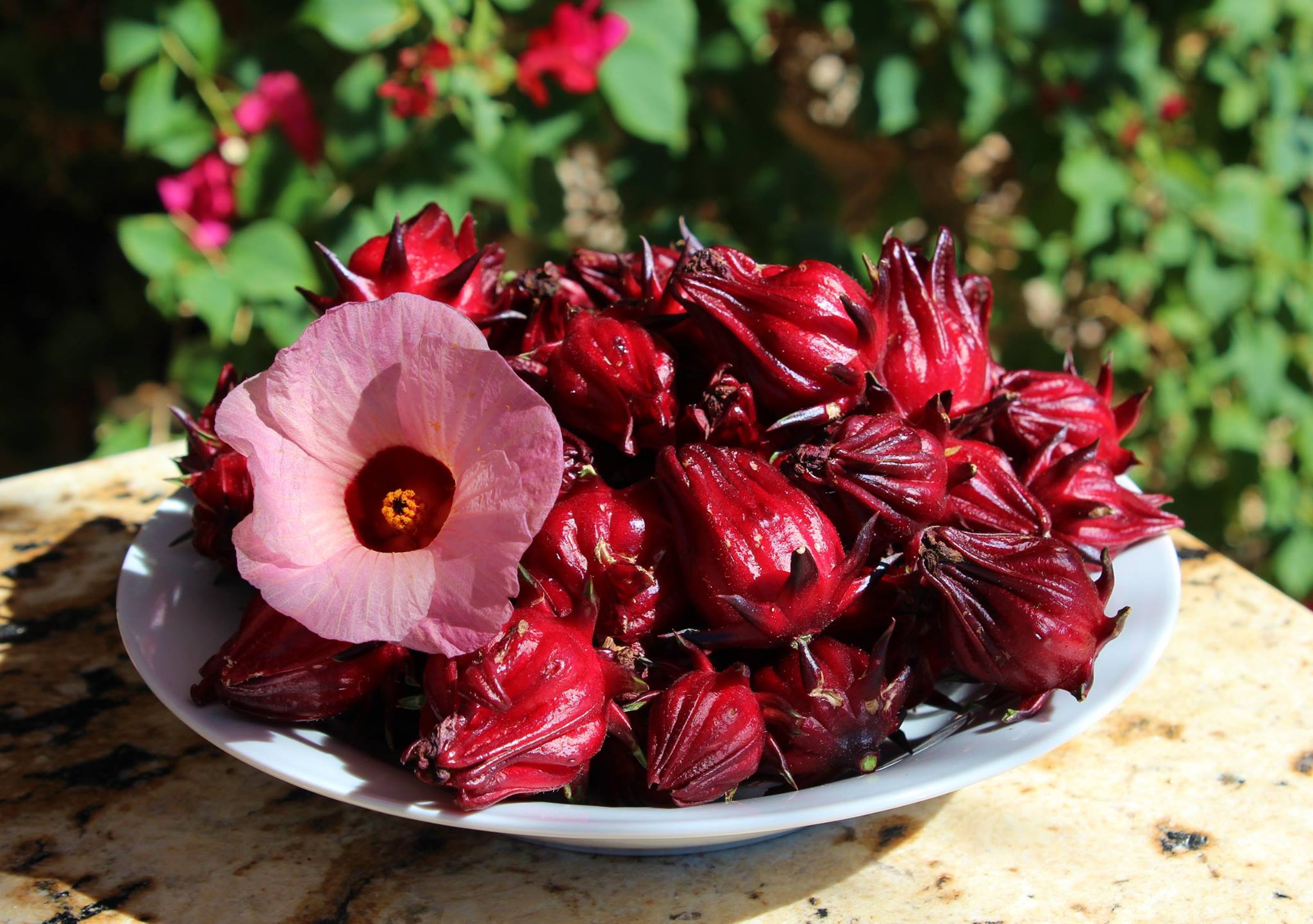
Roselle, also known as Hibiscus sabdariffa, is a plant with a rich history and numerous uses. Ever wondered why this crimson beauty is so popular? Roselle is not just a pretty flower; it’s a powerhouse of benefits. From its vibrant petals to its tangy taste, this plant has found its way into kitchens, medicine cabinets, and even beauty routines. Whether you’re sipping on a refreshing hibiscus tea or using it as a natural remedy, Roselle offers something for everyone. Ready to learn more? Let’s dive into 15 fascinating facts about this versatile plant that might just surprise you!
Key Takeaways:
- Roselle, also known as Hibiscus sabdariffa, is a tropical plant with vibrant red calyces. It's used to make hibiscus tea, has medicinal properties, and is rich in vitamins and antioxidants.
- Roselle holds cultural significance, used in festive drinks, symbolizes love, and even serves as a natural dye. It's easy to grow in warm climates, making it a versatile and valuable plant.
What is Roselle?
Roselle, also known as Hibiscus sabdariffa, is a tropical plant known for its vibrant red calyces. These calyces are used in various culinary and medicinal applications. Let's dive into some fascinating facts about this versatile plant.
-
Origin: Roselle is believed to have originated in Africa. It has been cultivated in many tropical and subtropical regions around the world.
-
Appearance: The plant can grow up to 8 feet tall. It has green leaves and bright red calyces, which are the most used parts.
-
Culinary Uses: Roselle calyces are used to make a popular drink called hibiscus tea. This tea is enjoyed both hot and cold.
-
Medicinal Properties: Roselle is rich in vitamin C and antioxidants. It is often used in traditional medicine to treat colds and infections.
Nutritional Benefits of Roselle
Roselle is not just a pretty plant; it packs a nutritional punch. Here are some of the health benefits you can gain from consuming it.
-
Rich in Vitamins: Roselle is a great source of vitamins A and C. These vitamins are essential for maintaining healthy skin and a robust immune system.
-
Antioxidant Powerhouse: The plant contains high levels of antioxidants, which help fight free radicals in the body. This can reduce the risk of chronic diseases.
-
Digestive Aid: Consuming roselle can help improve digestion. It has natural diuretic properties that can help cleanse the digestive system.
-
Weight Management: Roselle tea is low in calories and can be a good addition to a weight loss diet. It helps in reducing appetite and improving metabolism.
Cultural Significance of Roselle
Roselle holds a special place in various cultures around the world. Its uses go beyond the kitchen and medicine cabinet.
-
Festive Drink: In many Caribbean countries, roselle is used to make a festive drink called sorrel. This drink is especially popular during Christmas.
-
Symbol of Love: In some cultures, roselle flowers are given as a symbol of love and affection. The bright red color represents passion and romance.
-
Textile Dye: The red calyces of roselle are used as a natural dye for textiles. This practice is common in parts of Africa and Asia.
Growing Roselle
Interested in growing your own roselle? It's easier than you might think. Here are some tips to get you started.
-
Climate: Roselle thrives in warm, tropical climates. It requires plenty of sunlight and well-drained soil.
-
Planting: Seeds should be planted about half an inch deep in the soil. They usually germinate within a week.
-
Watering: The plant needs regular watering, especially during the growing season. However, be careful not to overwater as it can lead to root rot.
-
Harvesting: The calyces are ready to be harvested about three months after planting. They should be picked when they are bright red and tender.
Roselle's Hidden Gems
Roselle isn't just a pretty flower; it's a powerhouse of benefits. Packed with vitamin C, antioxidants, and minerals, this plant can boost your health in surprising ways. From lowering blood pressure to aiding digestion, Roselle's got your back. Plus, its tangy flavor makes it a hit in teas, jams, and even savory dishes.
Don't overlook its anti-inflammatory properties either. Roselle can help reduce swelling and pain, making it a natural remedy for various ailments. And let's not forget its antibacterial and antiviral abilities, which can keep you safe from infections.
So next time you see Roselle, remember it's more than just a flower. It's a versatile, health-boosting plant that deserves a spot in your kitchen and medicine cabinet. Give it a try and see the benefits for yourself!
Frequently Asked Questions
Was this page helpful?
Our commitment to delivering trustworthy and engaging content is at the heart of what we do. Each fact on our site is contributed by real users like you, bringing a wealth of diverse insights and information. To ensure the highest standards of accuracy and reliability, our dedicated editors meticulously review each submission. This process guarantees that the facts we share are not only fascinating but also credible. Trust in our commitment to quality and authenticity as you explore and learn with us.


